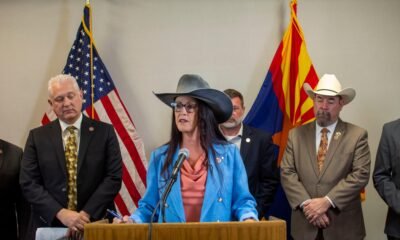Air pollution
EPA’s Vital Clean Air Programs: A Lifeline for Public Health

Arizona is grappling with a critical air quality crisis, prompting public health leaders to urge the Environmental Protection Agency (EPA) to enhance its efforts. The recent “State of the Air” report by the American Lung Association reveals troubling trends, indicating that Maricopa County experienced an average of 54.8 unhealthy ozone days annually, marking the highest count since 2010.
Covering air quality data from 2021 to 2023, the report shows Phoenix has made strides in reducing particle pollution but has seen a notable rise in smoggy days, positioning it as the fourth most ozone-polluted city in the United States.
Ozone and particle pollution are known to pose serious health risks. Short-term exposure can irritate airways and exacerbate respiratory illnesses. Long-term exposure is linked to severe health complications, including metabolic disorders and an increased risk of premature death. These issues are especially concerning in Maricopa County, where ozone nonattainment has persisted for over 25 years, and air quality continues to receive an ‘F’ grade for particle pollution.
The combustion of fossil fuels in transportation and energy sectors primarily contributes to Arizona’s air pollution levels. Polling by the American Lung Association indicates that 80% of Arizona voters recognize the air pollution crisis, and a majority advocate for stronger policies addressing climate change. Notably, 77% support clean energy solutions, and 78% believe clean energy will improve air quality.
Despite these public sentiments, the EPA’s plan to rollback over 30 clean air programs appears alarming. Proposed reductions in emission standards from coal-fired power plants and limitations on particle pollution could considerably heighten the pollution burden. These changes threaten public health, leading to increased asthma attacks among children and heightened illness among workers and residents.
Currently, about 84% of Arizonans reside in counties with failing air quality grades. This urgent scenario calls for the EPA to implement robust standards to combat health-harming pollutants. The newest report highlights a national trend of rising particle pollution heightened by extreme weather events, making it increasingly crucial for the EPA to maintain stringent air quality standards.
Weakening these regulations would disproportionately benefit polluting industries at the cost of public health, undermining the recommendations of scientific and health experts. For Arizonans to breathe cleaner air, stronger protective measures need to be established. The EPA must lead by example to inspire Arizona and other states to tackle harmful pollution effectively.
Victor Waters, MD, JD, FCLM, is the Chief Medical Officer of Dignity Health Arizona Central and West Valley Market.


















